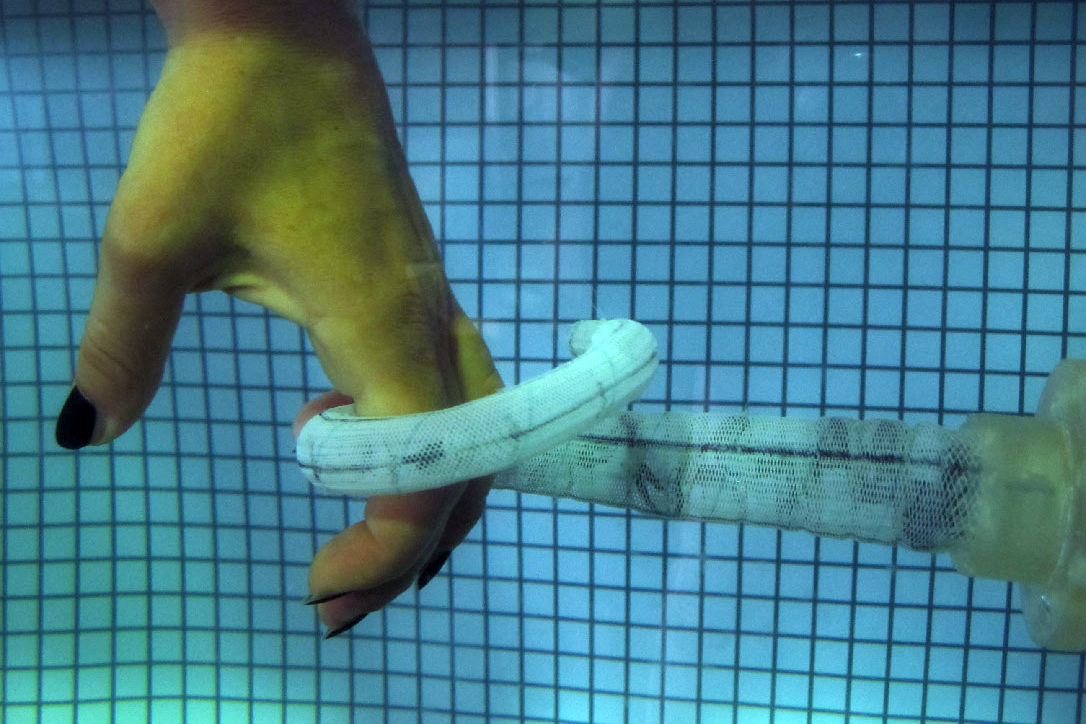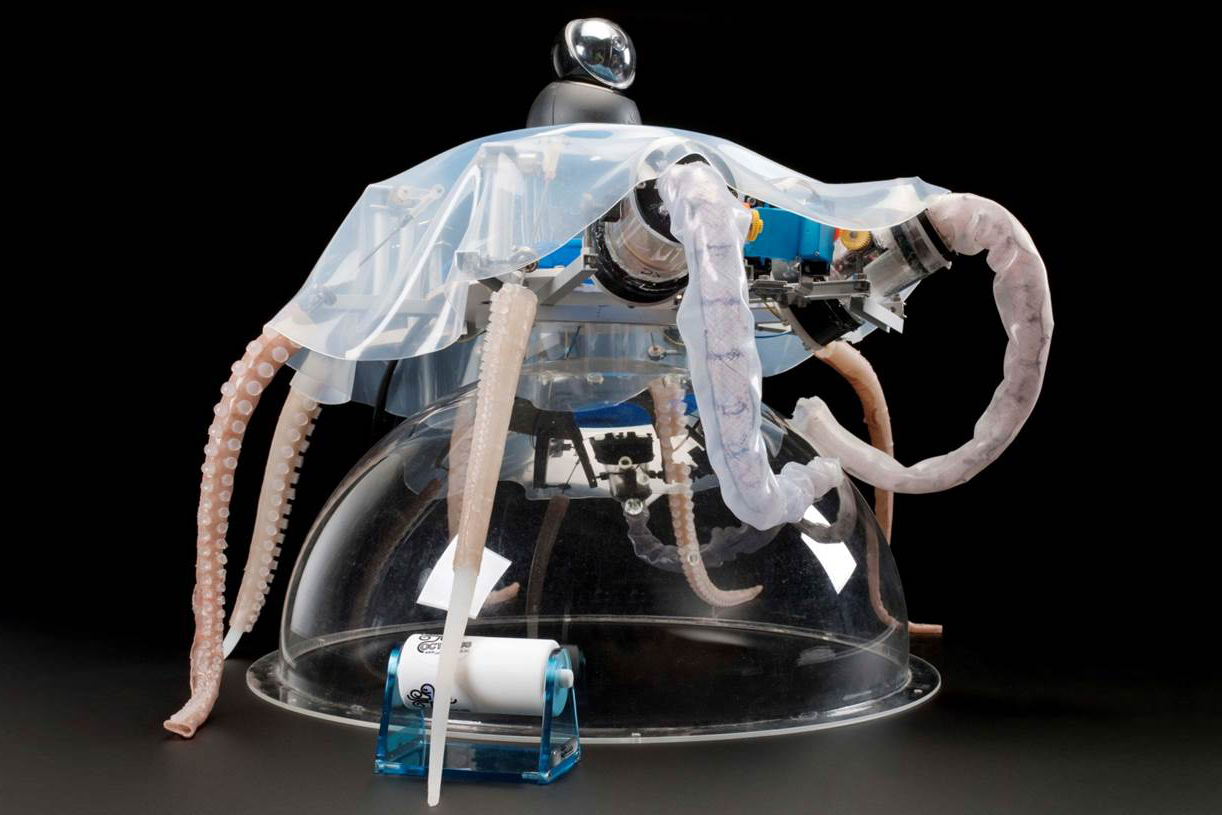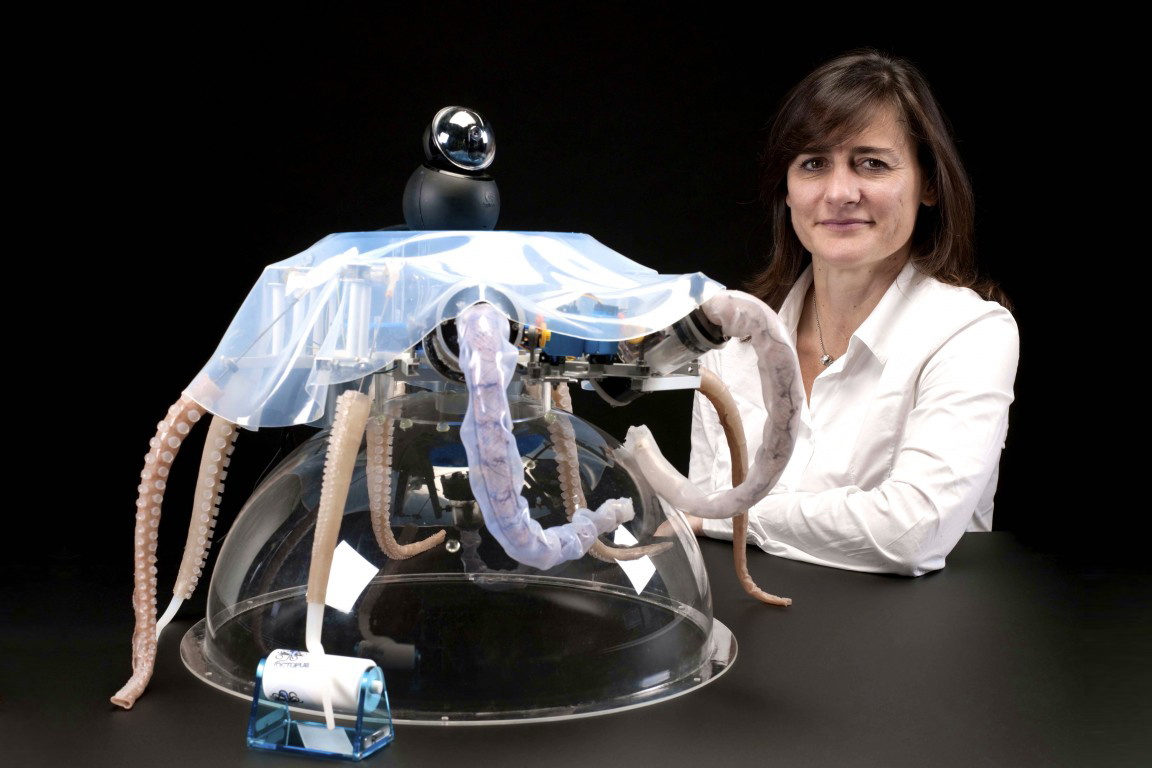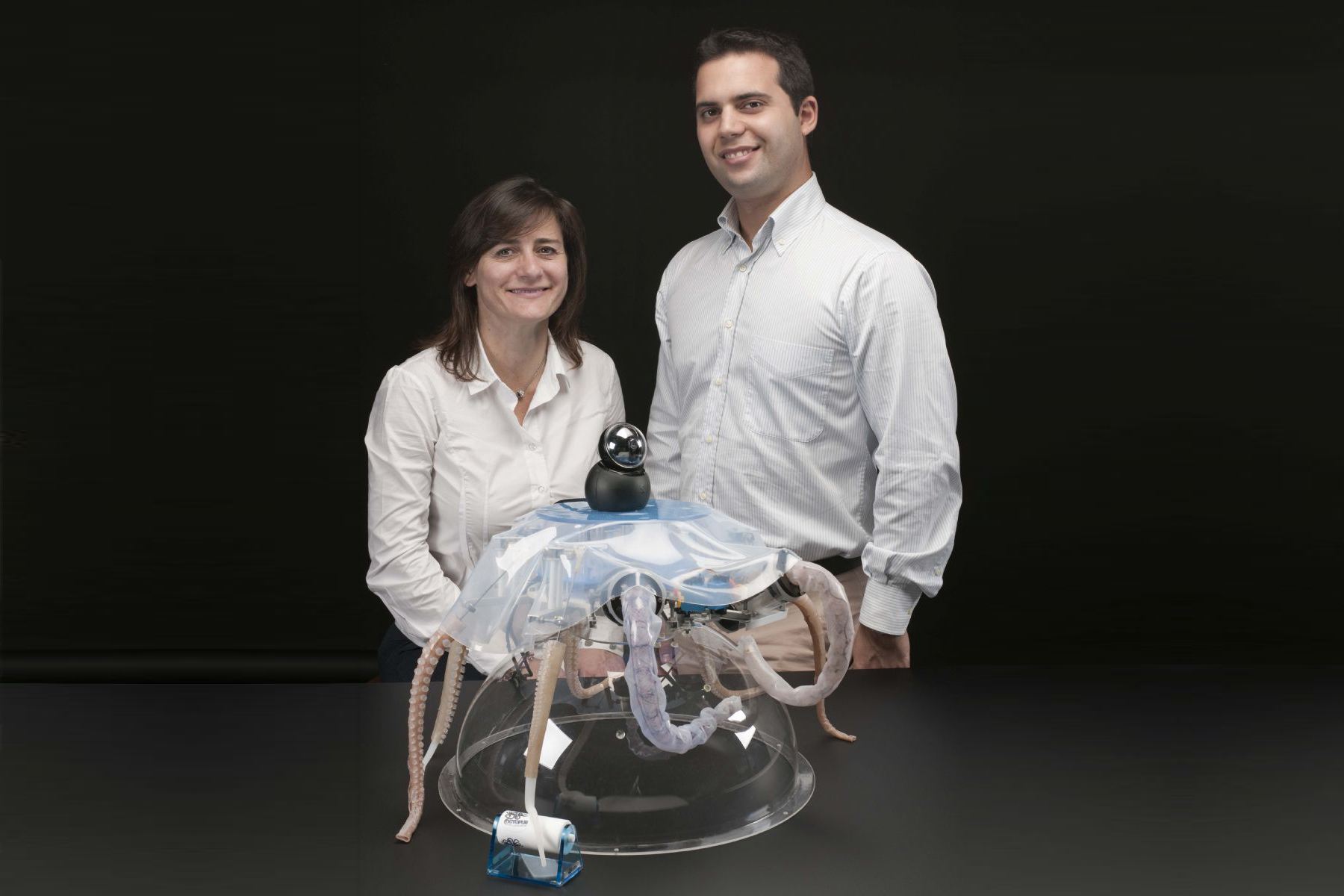This is one of the creations of Cecilia Laschi, a professor at Sant’Anna’s BioRobotics Institute, and a pioneer in the field of “soft robotics” who has spent much of her career coming up with more biologically inspired robots that are a world away from the metal machines we think of when we hear the term.
“Robot bodies are too different from those of living organisms, especially for being rigid,” Laschi told Digital Trends. “In living organisms, soft bodies deforms in the interaction with the environment, and this is exploited to simplify the control of the desired movement. The octopus represents an extreme model for understanding how a large variety of movements and behaviors can be obtained with a soft body, with no rigid parts. We investigated the animal and several technologies for building an octopus-like robot able to grasp, walk, and swim.”
The squishy robot octopus created by Laschi and her team is incredibly flexible and far more able to react to its environment than many other robots. In a fascinating new article for IEEE Spectrum, Laschi describes the work of her team, as well as her own philosophy about the future of soft robots. “This relatively new field of research has the potential to upend our ideas about what robots are capable of and where they can be useful,” she wrote.
One of the key advantages of the Octopus robot developed by Laschi and her team is that it requires far less computing power than you might expect — as well as being far more flexible and capable of moving on rough terrain. Possible applications could include sea exploration or even the biomedical field.
The robot octopus was tested in the Mediterranean Sea earlier this year, and is capable of moving by drawing in liquid and then expelling it from its body, or using its eight legs to scamper across the sandy sea bed. To replicate the sea-dwelling creature’s body, Laschi and her team used materials like electro-active polymers which contort when exposed to electricity.
Laschi told Digital Trends that that work on the octopus project is now over, but related work is continuing. “We always have more than one project on a research topic,” she said. “We are investigating interesting biomedical applications. We developed a soft endoscope that can change stiffness and artificial vocal cords that vibrates with an air flow. We are building a soft arm for assisting elderly people in the shower … supported by the European Commission.”
Does she think that one day all robots will look like the kind of “soft robotics” she is building? “I am sure that the soft robotics approach — the use of soft robotics and/or deformable structure — is the way robots will be built in the future,” she said.
There’s nothing soft about that answer.






